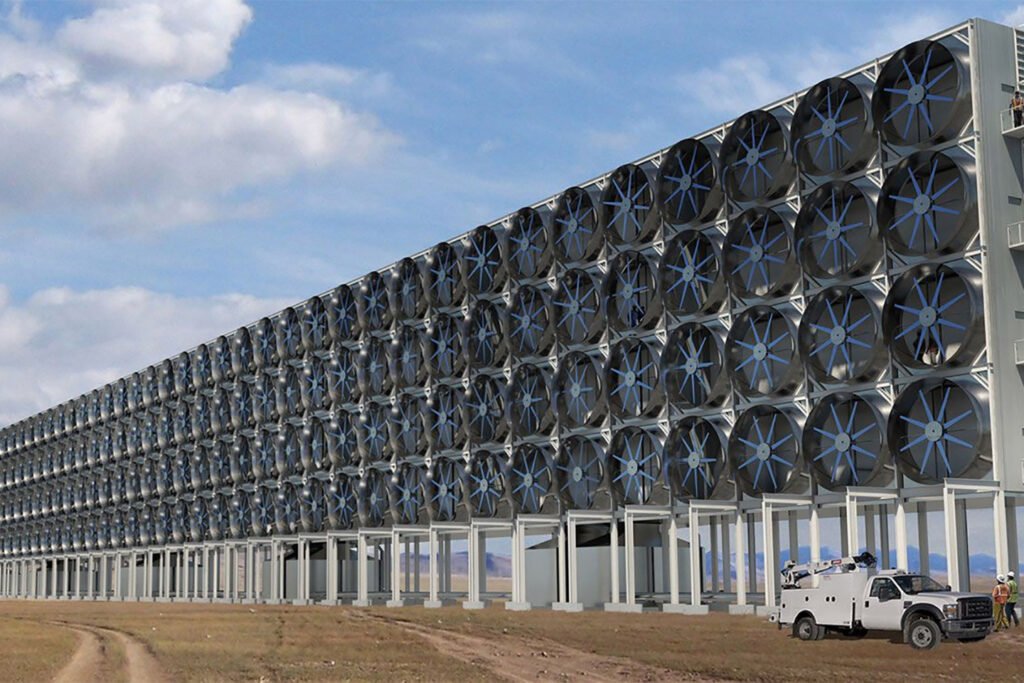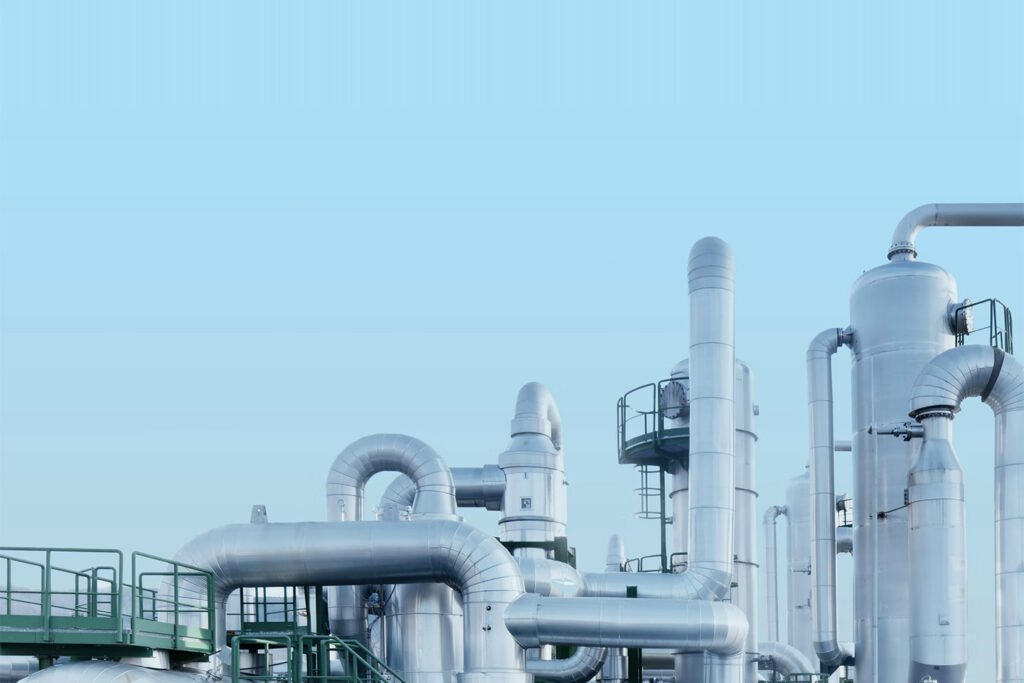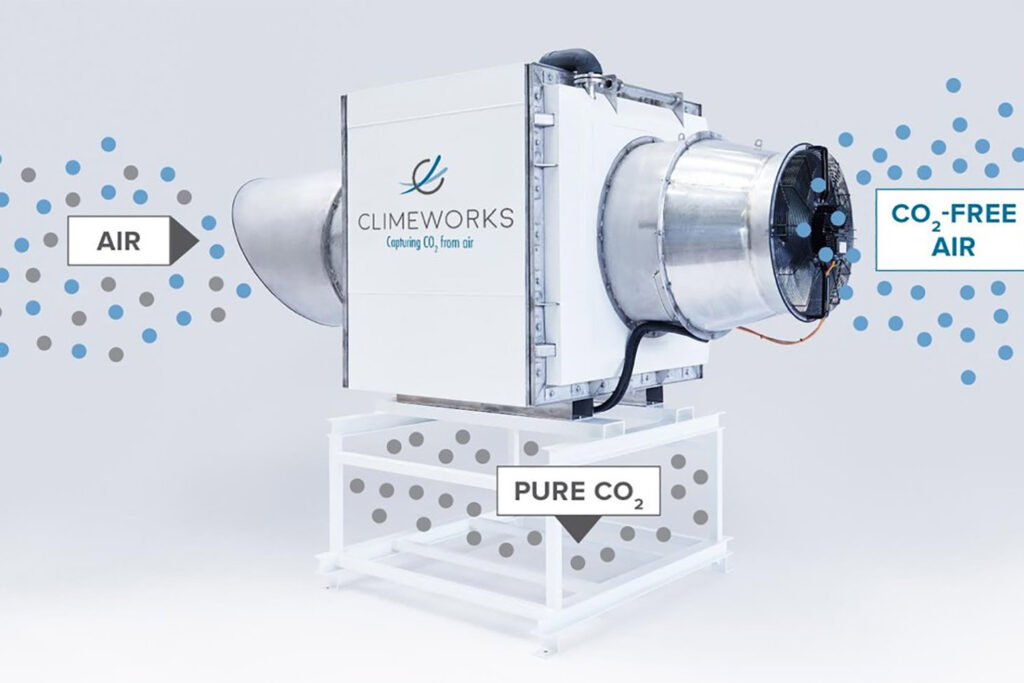

If you’re concerned about climate change, you should seriously consider buying a carbon capture subscription. Here’s why…
The more people invest in carbon extraction technologies, the more efficient they’ll become. And we need them to be more efficient…

At some point in the next few decades, we may depend on this technology to prevent serious repercussions of global warming.

Become a climate hero and remove 85kg of carbon dioxide right now for just $7:
How does direct air carbon capture work?
Direct Air Capture (DAC) is a technology designed to remove carbon dioxide (CO2) directly from the atmosphere. It offers a potential means to reduce atmospheric CO2 levels and combat climate change. Here’s how DAC typically works:
- Air Intake: The process begins by pulling in atmospheric air using fans or blowers. This air contains a small concentration of CO2, typically around 0.04% (or 400 parts per million), which is the approximate concentration of CO2 in the Earth’s atmosphere.
- CO2 Absorption: The captured air is then passed through a chemical absorbent or adsorbent material that selectively captures CO2 molecules. Common absorbents include amine solutions (liquid chemicals) or solid sorbents.
- Liquid Absorption: In liquid-based DAC systems, the absorbent solution flows over a surface or through a packed bed where it contacts the incoming air. The CO2 in the air chemically reacts with the absorbent to form a compound, effectively removing it from the air.
- Solid Adsorption: In solid-based DAC systems, solid sorbent materials adsorb CO2 molecules as they pass through. These sorbents have a high affinity for CO2 and can capture and release it as needed.
- CO2 Separation: After CO2 is captured by the absorbent or adsorbent material, the next step is to separate the captured CO2 from the material. This can involve changing the temperature or pressure conditions or other techniques specific to the chosen DAC technology.
- CO2 Concentration: The separated CO2 gas is then concentrated to increase its purity. Depending on the desired application, the CO2 may be concentrated to a purity level of 95% or higher.
- CO2 Utilization or Storage: The concentrated CO2 can be used for various purposes, such as:
- Storage: It can be compressed and stored in geological formations, similar to Carbon Capture and Storage (CCS) methods, to prevent it from re-entering the atmosphere.
- Utilization: It can be used in various industrial processes, such as the production of synthetic fuels, chemicals, or building materials.
- Direct Removal: It can be released into the atmosphere, effectively removing CO2 from the atmosphere.
- Regeneration: After the CO2 is separated and utilized or stored, the absorbent or adsorbent material needs to be regenerated so that it can be used again. This typically involves reversing the CO2 capture process, either by changing conditions (e.g., heating) or using other regeneration techniques.
Direct Air Capture is an emerging technology, and several companies and research institutions are working on developing and improving DAC systems. While DAC has the potential to remove CO2 from the atmosphere, it is still relatively expensive compared to other mitigation strategies, and ongoing research is focused on making it more cost-effective and scalable to have a meaningful impact on climate change mitigation.


 Day 15
Day 15
 Day 13
Day 13